How best to manage early season pasture growth is something I was keen to get a thorough handle on, so I spoke with Brian Wehlburg this week. Brian is a Holistic Management educator based on his farm near Port Macquarie NSW, but training in Holistic Management all over Australia. Early season growth was something he talked about when he visited our farm with his training group earlier this year, so I thought I’d follow it up with him.
First, I will explain that when I am referring to early season pasture growth – we are talking about the window when growth really starts to take off. A time when we might double the quantity of plant dry matter in a relatively short period of time. For us here on the Liverpool Plains in NSW, this is well into Spring, when the weather warms up and the days get longer and our summer growing grasses (C4 or subtropical, or warm season grasses) begin to grow.
Should we change the way we manage grazing at this time of year? Well Brian rightly points out that we should always be considering changes to our grazing in response to pasture growth, seasonal conditions, time of year, and monitoring – something very strongly advocated in Holistic Management. There are however, some extra things that can be considered at the seasons’ beginning.
The Tools of Grazing
Brian reminds us of the two main tools with which we have to work – animal grazing and animal impact.
During active growth
During active pasture growth, grazing is the main focus. With the rapid plant growth at this time it is important that animals don’t stay too long in a paddock, or grasses may be at risk of overgrazing due to livestock feeding on newly regrowing plants that have little energy reserves. The same applies to ensuring adequate time before returning to the paddock – relatively to plant recovery. There is less emphasis in the active growth (or open) season on animal impact. The fresh grass plants tend to spring back up again from where they are trampled shortly after animals are removed.
During closed season or non-growth
In the non-growth or closed season however, there is much to be gained from animal impact – and this becomes a stronger focus. Often during this time there is lignified plant material that can be crashed to the ground with animal impact, where it will help cover the soil and eventually break down. Animal grazing is less of the focus at this time because no active plant growth means there is no risk of overgrazing.
Given that the focus of this blog post is the active growing season, and grazing is our main tool of focus – let’s have a look at what we might consider with grazing at this time of year.
Recovery from Dormancy or from Grazing?
Plant recovery is something regularly referred to in managing pastures. Something Brian suggests to consider at the high growth time of year with regard to recovery is that we are careful to differentiate
plant recovery after grazing
from
plant recovery after dormancy.
At the time of rapid, early season growth, if we wait until plants recover from dormancy, then it’s likely we won’t know where to put our livestock, as most paddocks will be at the same early growth stage of only a few leaves, all at once. Brian refers me back to nature. In nature animals wouldn’t be kept off early season growing perennial grasses when the growth flux comes all at once.
So, Brian points out that we CAN graze plants early in their recovery from dormancy (not grazing) – and not only that, if we do it right, we can also improve the structure and production of our plants! We can’t however stay grazing for very long – because growth is so rapid, we risk re-grazing plants that have already started their regrowth and the fact that the pasture is so short means there isn’t much food for the animals to stay but for a very short time!. For management purposes, this may mean opening up a few gates for one grazing move if you have smaller blocks – otherwise you may spend a lot of time moving livestock during the start of the season. Also relevant, is what Brian points out – that the tool of animal impact has less effect on the plant at this stage, due to its structure.
How can we change plant structure and production?
Many plants have something called apical dominance, which is the dominance of one growing stem/branch etc over others on the plant. The development of growth of the lateral buds of the plant is actually suppressed by the IAA auxin hormone produced by the tip of the main dominant shoot.1 If you imagine the quintessential Christmas tree shape of some pine trees – this is strong expression of apical dominance of the main trunk – giving the triangular or cone shape to the tree. Grasses are the same.
The grazing of this dominant tip means that the auxin producing part of the plant is removed and there is no longer suppression of the lateral buds. This can have significant impacts on plant growth keeping the plant more vegetative, as seen in Brian’s examples here of a sorghum plant.
Ungrazed Grazed
You can see that there is a greater leaf area and a different plant shape. I’m sure you know which plant you would rather have in your paddock. Brian points out that there is a small window of opportunity of maybe a few weeks a year in which to make this considerable change to the structure of grass plants. This window of opportunity is the period of very high growth.
You can see below how quickly plants can grow and recover, with recovery occurring over just a few 4 days, but careful monitoring is required.
Brian gave me a practical example of what this particularly fast growth means for our management. It also highlights how much we need to be on the ball to take advantage of this small window.
In this example, when plants are smaller at the season’s start, with plants maybe only having 2-3 leaves, an area of 40 x 40 metres may be required for a cow to get a gut full of feed. Just 4 weeks later in the season, it may take just a 7 x 7 metre area on which a cow must graze to achieve gut fill. The large area necessary for gut fill at the season’s start is actually a plus, as it allows us the ability to affect plant structure over a larger area and therefore greater number of our paddocks. See the example given by Brian below, where both areas provide gut fill of 10kg and plants are spaced at 5.39cm.
|
|
Early Season |
4 weeks later |
|
Grazing area needed to achieve 10kg of gutfill |
40m x 40m |
7m x 7m |
|
Plants visited per day |
553, 633 |
28,027 |
Four weeks later in the season, a cow would visit just 5% of the plants visited at season’s start, in order to get their gut fill! This scenario is especially so for the C4 (or warm season) grasses whose growth can be particularly fast.
Weed control advantages
Another advantage of this early season growth is the effect on weeds. When plants are so small, it is difficult for animals to differentially graze, as the plants are quite small. Grazing less desirable forbes or weeds in this process can set the plants back and allow grasses to better compete. If grazing is held off until four weeks later however, when both the grasses and other plants are more advanced, it is easier for an animal to selectively graze around a now larger, less desirable plant or weed – allowing it to ‘push on’, and grow while leaving the grass in a slower growth recovery mode. This early season grazing is also beneficial for any younger, newly germinated grasses – to help them survive and fill in any ground cover gaps.
In Summary
By manipulating the plant structure of grasses early in the season, we can be producing extra feed than we otherwise could have, from the same pasture, with the same rainfall. To successfully achieve this however, our observation and monitoring skills will need to be really well utilised to ensure that we actually are progressing the pasture and not staying too long and overgrazing.
The reality is that we are here for production and profitability. Brian says that the growing season is the time to grow plants and by allowing plants to regain at least their volume after a graze, preferably more so, by the end of the growing period every plant has had a chance to express its full growth ability and move into the dormant season with as much energy below the soil to sustain itself and be in a better position for the next growth event.
Thank you to Brian Wehlburg from Inside Outside Management for sharing his wonderful knowledge and images with us.
What are your experiences with early season grazing?
References
- “apical dominance.” Dictionary.com Unabridged. Random House, Inc. 2nd Aug. 2015. <Dictionary.com http://dictionary.reference.com/browse/apical+dominance

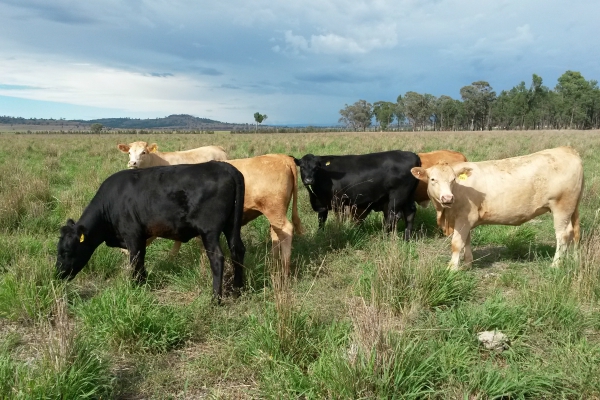
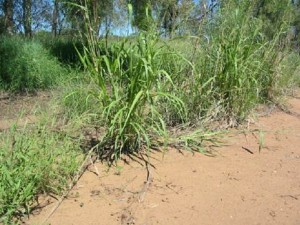
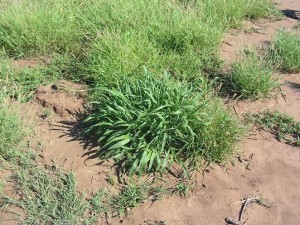
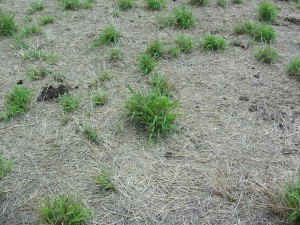
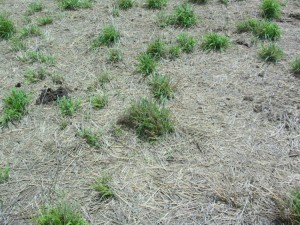
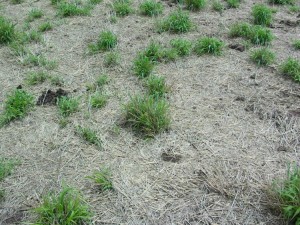
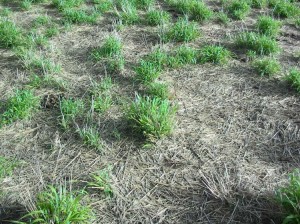
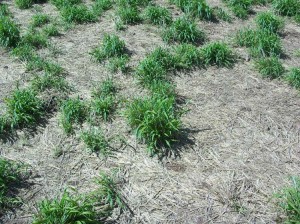
Thanks for a great post Kirrily! Pleased to see Brian’s knowledge shared. It all seems a lot of common sense, however is often overlooked, and as you have mentioned, not monitored. I fully support a holistic approach and look forward to hearing about your results, as well as implementing it more on our own land.